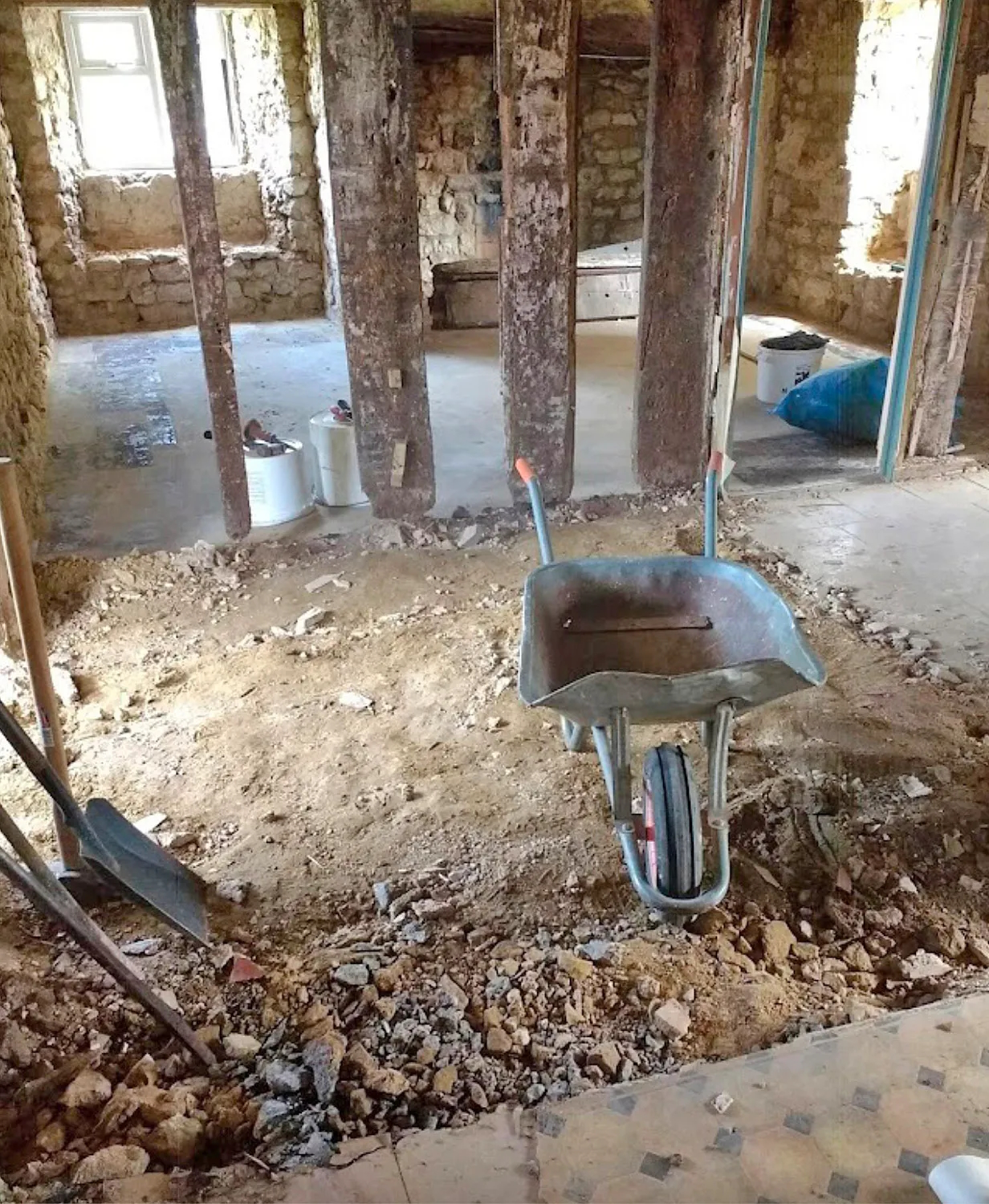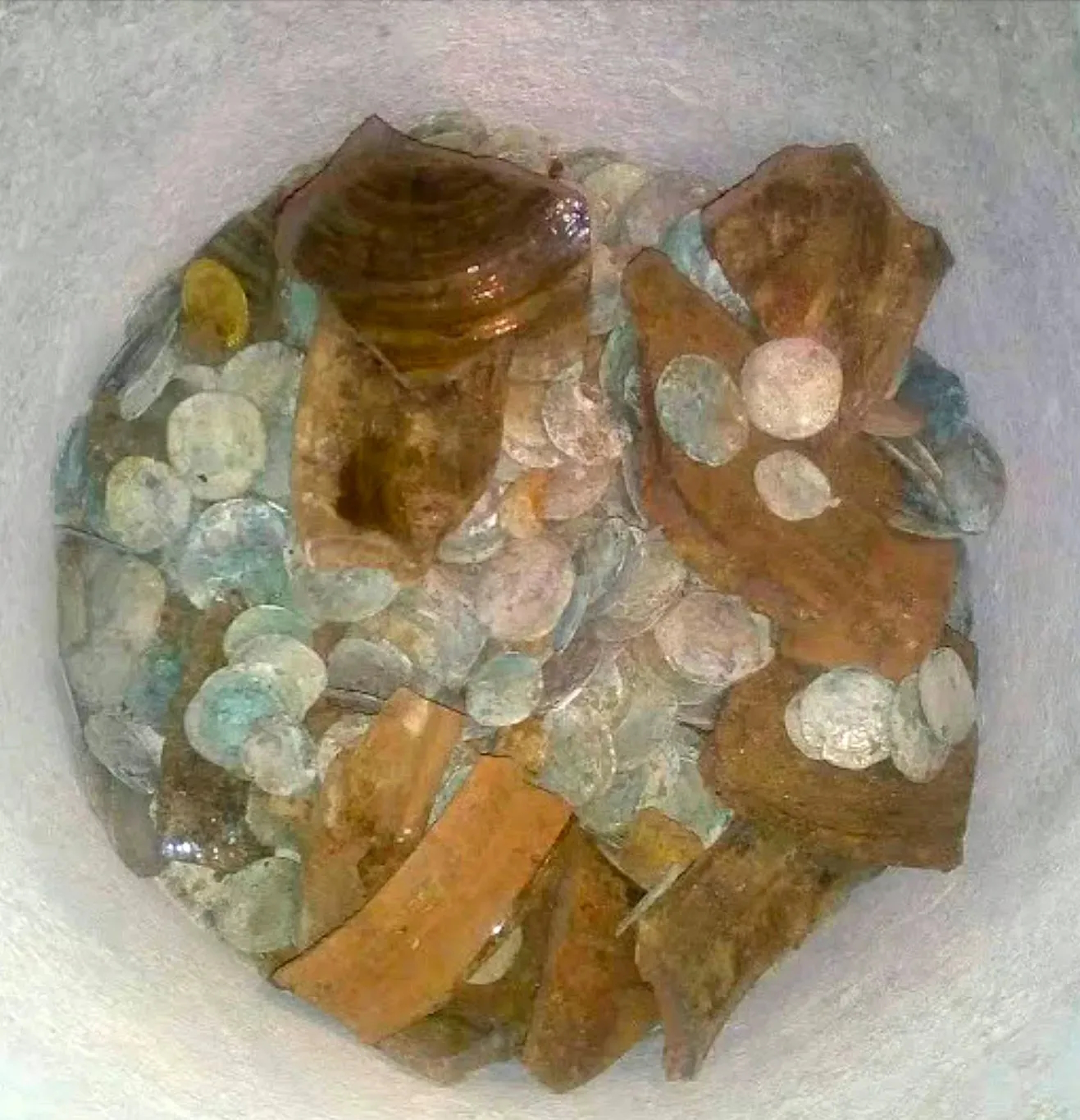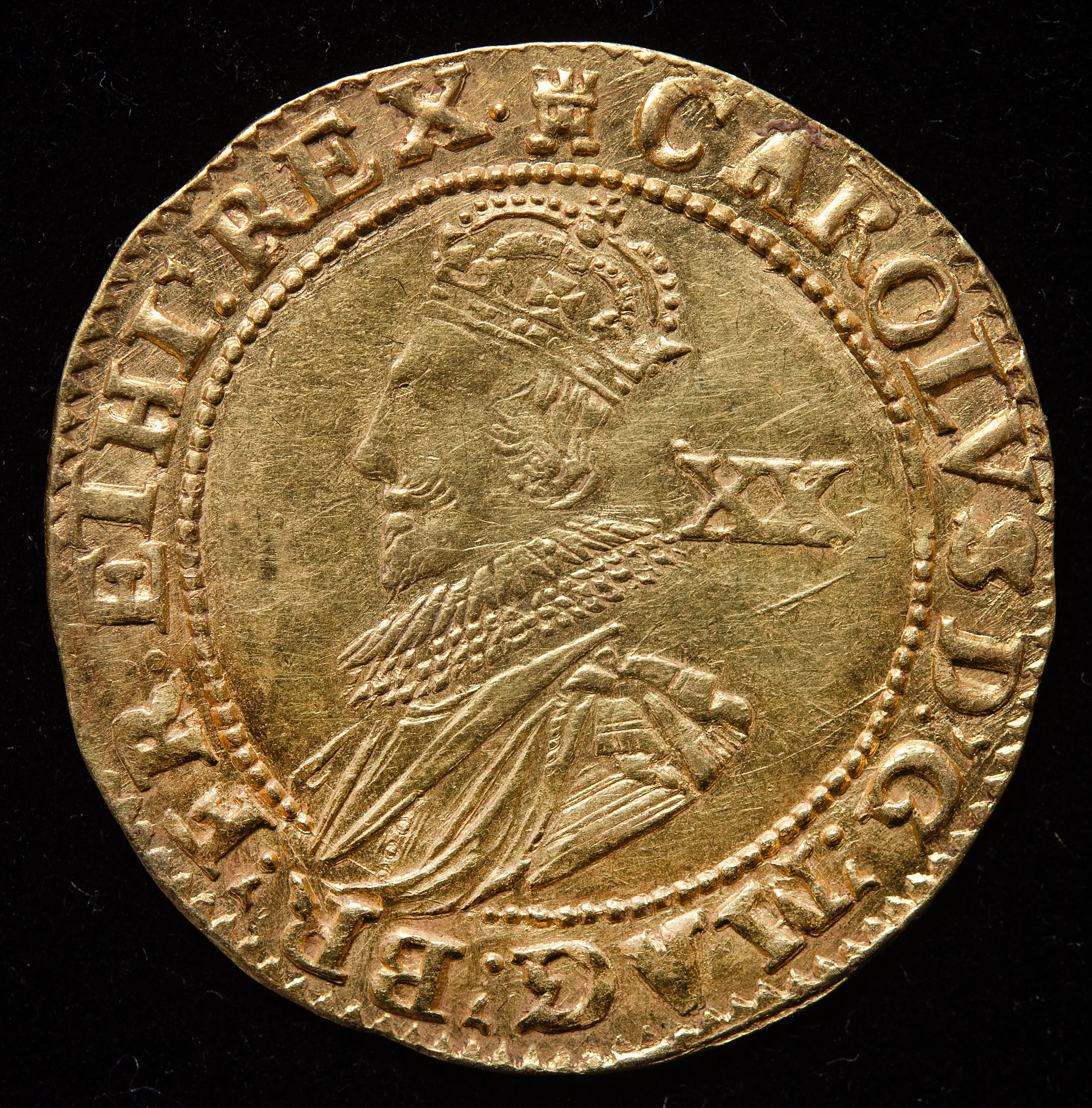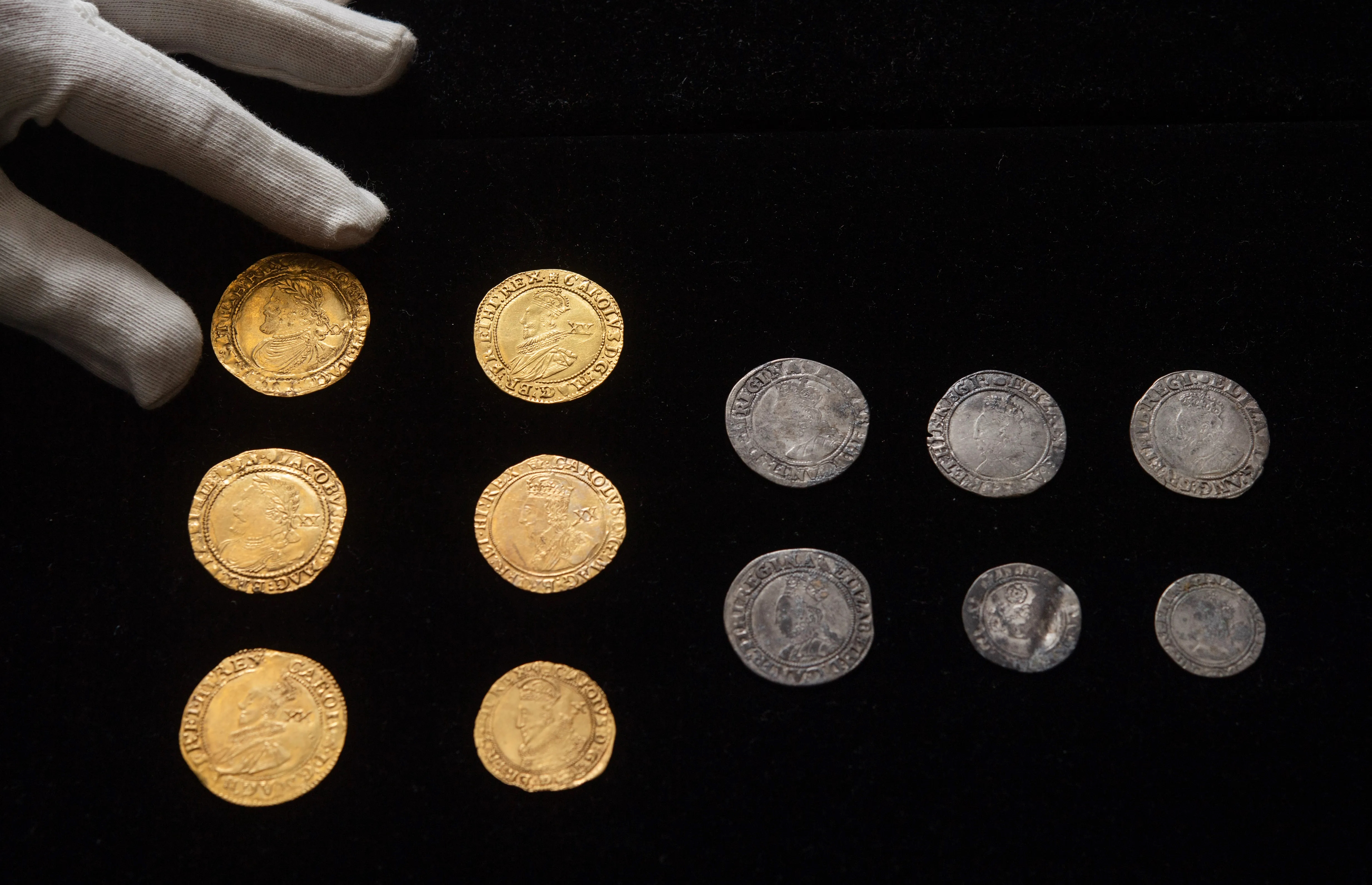Dobrej pokládek, to by nebylo marný najít... 👍🙂
The couple discovered a hoard of gold and silver coins from the 17th century. They sold it for nearly two million
Categories: Nálezy nejenom s detektorem ve Velké Británii a Irsku
Five years ago, Robert and Betty Fooks fulfilled a dream when they bought a 17th century farmhouse in South Poorton, Dorset. The dream soon turned into a fairytale reality when, while digging up an old floor, they discovered over 1,000 gold and silver coins from the English Civil War, worth just under two million crowns...
When the Fooks bought the small 400-year-old farmhouse in West Dorset, they discovered it was in need of extensive renovation. The kitchen had low ceilings, so they decided to remove the concrete floor. They then went through old paving stones and smothered clay, getting 60cm deeper. One evening in October, Robert was digging through the soil with a pickaxe when he came across a glazed ceramic bowl. It was broken and contained undamaged gold and silver coins.
"That evening I was with the children and my husband was digging with the pickaxe when he called out that he had found something. He put all the coins in a bucket. If we hadn't lowered the floor, they would still be hidden there," said Betty Fooks. "I assume the man wanted to retrieve them, but never got the chance," she added.
The treasure was immediately reported to the local finds liaison officer. It was then taken to the British Museum for cleaning, documentation and later valuation. The set of 1,029 coins included gold coins, silver shillings and sixpences of James I and Charles I. There were also silver shillings and sixpences of Elizabeth I, Philip and Mary. They were deposited together sometime between 1642 and 1644, at the beginning of the First English Civil War.
When war broke out in August 1642, Dorset and its ports were seized by Parliament. But in 1643 it was largely taken by Royalist forces. Although no major battles were fought, troops on both sides were constantly moving in and out of the area, requisitioning supplies, burning towns and generally causing misery, fear and violence. During this period, people preferred to hide their valuables. Someone once put them under the floor of a farmhouse and never brought them back...
Because the find is over 300 years old, contains precious metal, and is a grouping of multiple coins, it meets the definition of an official treasure. Normally, such a find would end up in the possession of the Crown and the local museum would be given the opportunity to acquire it at an appraisal price. However, apparently none of the museums wanted it or were able to raise the cash because the treasure was returned to the finders and they offered it for auction.
The auction house's estimate before their sale was £35,000. However, on April 23, all the coins were sold for almost double that - £60,740 (nearly £1.8 million). Including fees and commissions for £78,000 (about 2.3 million crowns). The most expensive was a gold coin of Charles I from 1636, which was auctioned for £5,000 (about 147,000 crowns). In second place was a gold coin of Charles I from 1627, with a price of about 112,000 crowns.
Sources: theguardian.com, thehistoryblog.com, dailymail.co.uk
 floor reconstruction
floor reconstruction
 coins and fragments of the bowl
coins and fragments of the bowl
 Mr and Mrs Fooks in their reconstructed kitchen
Mr and Mrs Fooks in their reconstructed kitchen
.png) The farm with the reconstructed house (right)
The farm with the reconstructed house (right)
 gold coin of Charles I.
gold coin of Charles I.
 selection of gold and silver coins from the hoard
selection of gold and silver coins from the hoard
 some of the coins
some of the coins
 the hoard contained 1,029 gold and silver coins
the hoard contained 1,029 gold and silver coins
The article is included in categories:
- Archive of articles > Archaeology > Finds and rescue research abroad > Nálezy nejenom s detektorem ve Velké Británii a Irsku
Post
To je hrozně zkažena ta Anglie takhle přijdou o všechnu historii...takový zlodějský přístup k nálezům je trestuhodný...když to nechají těm nalezcům,a nepozře to stát,tak je všechno vědění navždy ztraceno...to je teda šlendrian...měli by jim to zabavit,a pro výstrahu aspoň podmínku...
no tak tady si dám diskuzi určitě sledovat 

Ten Karel 1 to je luxus. Taková soc. kačka v prvním dojmu když ji náhodou kopnu má nádech zlata. No, tak kopu zdar



Liborak: tady je to zase druhý extrém, tady ti ani za poklad nic nedají 
Ale dají. Necení se však numismatická hodnota, nýbrž cena kovu. Vzhledem k váze mincí je pak samozřejmě ra cena kovu rapidně nižší než cena numismatická. Z toho pak plyne neochota nálezců, tyto nálezy vůbec hlásit a velká část skončí na tzv. černém trhu.
Jak kde...jak v kterém muzeu, jak který krajský úřad...jak kteří lidé na nich pracují, ne každý státní úředník či pracovník muzea v Čechystánu má rozumný náhled na motivaci a poctivost detektorářovu.
Někde nálezci s detektorem nakálejí a ještě dokáží výhružně "zavrčet". Někde je třeba nahlásit, že o nález se zakoplo na houbách či při venčení psa, někde s radostí poctivého detektoráře ocení a z důvodu veřejné motivace k poctivosti ho odmění v ceně vyšší, než by to dokázal černý trh.
Nejenom poctivost hledačů pokladů je o jednotlivých lidech, ale o lidech je i férovost úředníků a muzejníků ☝️
V KAŽDÉM PŘÍPADĚ je realita taková, že navzdory mnoha nepoctivým nálezcům, především v éře detektorů kovů, bylo odevzdáno ohromné množství kulturního dědictví, které by v opačném případě dodnes zůstávalo v zemi a nejspíš by tam většina zůstala navěky a kromě zlata a bronzu by tam postupně shnila.
Státní instituce i ty soukromé, které se angažují v archeologickém výzkumu, nemají a zřejmě nikdy mít nebudou tak velké finanční i personální kapacity, aby dokázali ze země vyzvednout byť jen to, co díky těm poctivcům již získaly.
Ne každý dokáže takovouto pravdu unést a svým EQ ji i zpracovat, žel však, tak to je a tak to nepochybně bude i nadále.
A proto jdu zítra najít "ten" poklad, který jsem ještě nenašel. Ale upřímně se vyznám, že až ho najdu, odevzdám ho tomu KÚ či muzeu, kde jim to racionálně a prakticky myslí, i když ten nález posunu o 100 km...😉... přece nebudu já ta blbá ovce a oni ti vychytralí despoti.
prodávat poklady načerno musí být o hubu
takže vím jistě že když najdu nějaký poklad tak to bude
při venčení psa kterého ani nemám 
nebo vyhrabaný divočáky 
a běda jestli dostanou odměnu divočáci 

Pokladem se rozumí i např. depot mincí. Tyto se následně dají rozprodat jednotlivě a poklad je v nenávratnu ztracen.









